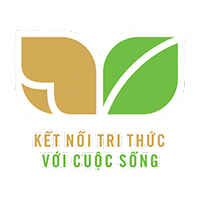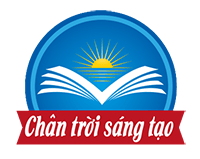Giải bài tập SGK Tiếng Anh lớp 10 Unit 9: Undersea World
Giải bài tập SGK Tiếng Anh lớp 10 Unit 9: Undersea World
Giải bài tập SGK Tiếng Anh lớp 10 Unit 9: Undersea World đưa ra lời dịch và câu trả lời tham khảo cho các phần: A. Reading (Trang 94-95-96 SGK Tiếng Anh 10), B. Speaking (Trang 97 SGK Tiếng Anh 10), C. Listening (Trang 98-99 SGK Tiếng Anh 10), D. Writing (Trang 99-100-101 SGK Tiếng Anh 10).
Đề thi học kỳ 1 môn Tiếng Anh lớp 10 trường THPT Nguyễn Công Hoan, Hưng Yên năm học 2016 - 2017
Đề thi học kỳ 1 môn Tiếng Anh lớp 10 Sở GD-ĐT Vĩnh Phúc năm học 2016 - 2017 có đáp án
A. Reading (Trang 94-95-96 SGK Tiếng Anh 10)
Before you read (Trước khi bạn đọc)
- Work with a partner. Look at the map and give the Vietnamese names for the oceans on the map. (Làm việc với bạn học. Nhìn vào bản đồ và viết tên các đại dương trên bản đồ bằng tiếng Việt.)
Antarctic Ocean: Nam Băng Dương
Arctic Ocean: Bắc Băng Dương
Atlantic Ocean: Đại Tây Dương
Indian Ocean: Ấn Độ Dương
Pacific Ocean: Thái Bình Dương
- Work with a partner. Look at the pictures below. Can you name the sea animal in each picture? The first letter of the word has been given to help you. (Làm việc với bạn học. Bạn có thể gọi tên các động vật biển trong mỗi bức tranh? Chữ cái đầu tiên của từ đã được cho sẵn giúp bạn.)
Seal: hải cẩu
Jellyfish: con sứa
Turtle: rùa biển
Shark: cá mập
While you read (Trong khi bạn đọc)
Read the text and do the tasks that follow. (Đọc đoạn văn và làm các bài tập theo sau.)
Hướng dẫn dịch:
Chỉ có một đại dương duy nhất. Nó được chia thành năm phần khác nhau: Thái Bình Dương, Đại Tây Dương, Ấn Độ Dương, Nam Băng Dương và Bắc Băng Dương. Cũng còn có nhiều biển, vùng, vịnh nhỏ hơn là một phần của các đại dương ấy. Những đại dương này chiếm 75% bề mặt trái đất. Nhiều thế kỷ nay những bí mật nằm sâu dưới lòng đại dương đã thách thức con người. Tuy nhiên, các nhà khoa học hiện nay với các trang thiết bị hiện đại đã vượt qua được những thách thức của đại dương. Con người đưa tàu ngầm đi khảo sát đáy biển và đưa lên bờ những mẫu sinh vật biển để nghiên cứu thêm. Những bức ảnh chụp từ vệ tinh cung cấp rất nhiều thông tin, bao gồm nhiệt độ nước biển, độ sâu và các cư dân dưới biển. Nếu không có những công nghệ hiện đại, chúng ta sẽ chẳng bao giờ có những thông tin quí giá như thế.
Động, thực vật biển được chia thành ba nhóm chính. Nhóm sống nhờ và lệ thuộc vào tầng đáy như loài sao biển. Nhóm động vật bơi như các loài cá và cá mập di chuyển không phụ thuộc vào dòng nước trong khi các loài sinh vật nhỏ bé khác bị dòng nước cuốn trôi đi như loài sứa biển. Động thực vật biển dù có kích thước nhỏ bé hay to quá cỡ đều góp phần vào sự đa dạng sinh học của biển. Nếu sự đa dạng sinh học này không được duy trì, sinh vật biển sẽ bị đe dọa.
Task 1. The words in the box all appear in the passage. Fill each blank with one of them. There are more words than needed. (Các từ trong khung xuất hiện trong đoạn văn. Điền vào mỗi chỗ trống một từ trong số đó. Có nhiều từ hơn cần thiết.)
1. tiny
2. investigate
3. gulf
4. biodiversity
5. samples
Task 2. Read the passage again and then answer the following questions. (Đọc lại đoạn văn và trả lời các câu hỏi sau.)
1. What percentage of the earth's surface is covered by seas and oceans? (Bao nhiêu phần trăm bề mặt trái đất được bao phủ bởi biển và đại dương?)
=> 75% of the earth's surface is covered by sea and oceans.
2. How do scientists now overcome the challenges of the depth? (Các nhà khoa học đã vượt qua thách thức của độ sâu như thế nào?)
=> They now overcome the challenges of the depth by using modern devices.
3. What can submarines do to help scientists know about the undersea world? (Tàu ngầm có thể giúp gì cho các nhà khoa học khám phá thế giới đại dương?)
=> They investigate the seabed and bring samples of the marine life back to the surface for further study.
4. What can we learn from the satellite photos? (Chúng ta có thể biết được gì qua các ảnh vệ tinh?)
=> We can know a wide range of information, including water temperature, depth and the undersea population.
5. What are the three groups of marine plants and animal? (Ba nhóm động thực vật biển là các nhóm nào?)
=> They are those that live on or depend on the bottom like the starfish, those that move independently of water currents and those that are carried along by the currents.
6. What would happen if the sea biodiversity were not maintained? (Điều gì sẽ xảy ra nếu hệ sinh thái biển không được duy trì?)
=> The marine life would be at stake if the sea bioadversily was not maintained.
After you read (Sau khi bạn đọc)
Work in pairs. Complete the summary of the reading passage by filling each blank with a word or phrase given in the box below. (Làm việc theo cặp. Hoàn thành bài tóm tắt của bài đọc bằng cách điền vào mỗi chỗ trống một từ hoặc cụm từ đã cho trong khung bên dưới.)
1. three-quarters
2. mysterious
3. modern
4. discoveries
5. biodiversity
6. huge
7. plants and animals
8. closely connected
B. Speaking (Trang 97 SGK Tiếng Anh 10)
Task 1. Below are some actions that should be taken to protect our oceans. Work in pairs. Put the actions in the order of importance and then say what we should or should not do. (Dưới đây là một số hành động nên được thực hiện để bảo vệ đại dương của chúng ta. Làm việc theo cặp. Xếp thứ tự các hành động theo tầm quan trọng và sau đó nói những gì chúng ta nên hoặc không nên làm.)
Xếp thứ tự:
1-f
2-e
3-c
4-d
5-g
6-a & b
7-h
1-f) I think action (f) is the most important because if we learn all about the oceans we can we'll understand their values and try to protect them.
=> We should learn all about the oceans.
2-e) We should not use herbicides, pesticides and fertilizers that harm the environment.
3-c) We should not fish for species that are limited, threatened or endangered.
4-d) We should dispose of fishing lines and nets properly.
5-g) We should keep only the fish we will eat and release the rest.
6-a & b) We should place rubhlish and plastic bags in proper dustbins and use watter sparingly and do not pollute it.
7-h) We should choose our seafood responsibly.
Task 2. Work in groups. Below are some threats to the health of the oceans. Discuss the consequences that might occur and offer some possible solutions. (Làm việc theo nhóm. Dưới đây là một số mối đe dọa với đại dương. Thảo luận các hậu quả có thể xảy ra và đưa ra một số giải pháp.)
A: Beaches are filled with plastic bags, pieces of glass and cigarette butts. This makes the sea polluted and endanger sea plants and animals.
B: And we should clean up beaches and tell people not to litter them.
C: We also should set up posters at holiday resorts, especially on the beaches, and have the campaign of "Keep our environment clean and beautiful" in schools, that is we shouldeducate children and people about a clean and healthy environment.
A: Whales and sharks are still hunted for food, medicine and other products.
B: This makes these sea animals extinct some day.
C: So all governments should have laws that prohibit the hunt for these endangered sea animals for any purpose. And I think restaurants in the world don't serve the food made from these animals' meat.
Task 3. Report to the class what your group has discussed. (Tường thuật cho lớp những gì nhóm em đã thảo luận.)
My group has discussed the threats to beaches which are now being polluted with all kind of rubbish such as plastic bags, pieces of glass and cigarette buits, ... . And we think that in order to rescue beaches, we should clean them up and at the same time tell everybody not to litter them. Besides these, we should educate people how important a healthy environment can be to our life! And this project should be carried out in schools so that small school population can get a good habit of conserving environment from early ages.









